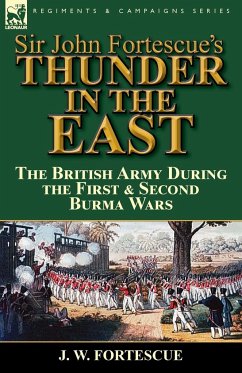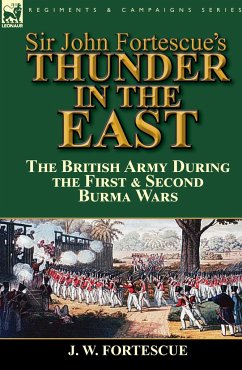Two hard fought wars in the Far East Among British Army historians the reputation of Sir John Fortescue stands virtually without equal. His comprehensive fourteen volume history is a work of unparalleled achievement in its field. Fortescue combines thorough source material research with insightful academic observation of the conduct of the campaigns he describes and of the decisions, errors and strategic and tactical options of their principal protagonists. The Leonaur editors have carefully selected passages from Fortescue's magnum opus to create a series of books, each focusing on a specific war or campaign. As the British Empire's influence spread throughout India, it found itself in conflict with native states of martial peoples who frequently proved themselves capable of effectively bringing the British to battle. By the early 19th century a war had been fought against the Gurkhas in Nepal in the north-east, and within a decade another threat arose beyond the frontier in the south-east. The Burmese Empire of the period had a long history of successful warfare to its credit so encroachment on territories in India by the Burmese was inevitably taken seriously and resulted in a military expedition to Burma to settle the matter in 1824. British and Indian forces found that they were opposed by an army with competent military commanders, which quickly built effective defensive positions whenever it halted. Bamboo stockades were surprising resilient to artillery fire, and inhospitable jungles hampered the invader and favoured the Burmese who knew the terrain intimately. Tropical diseases were also rampant and killed huge numbers of British and Indian troops more effectively than combat. In open battle, and supported by the Royal Navy, the British prevailed. However, British recognition of their inability to sustain a sufficient presence in Burma to guarantee good order, and the acknowledgement of the difficulties of campaigning in such an inhospitable environment, led to an inconclusive outcome. This inevitably led to, future troubles and the outbreak of the Second Anglo-Burmese war in 1852. Contains maps and images not present in the original text. Leonaur editions are newly typeset and are not facsimiles; each title is available in softcover and hardback with dustjacket.
Hinweis: Dieser Artikel kann nur an eine deutsche Lieferadresse ausgeliefert werden.
Hinweis: Dieser Artikel kann nur an eine deutsche Lieferadresse ausgeliefert werden.








